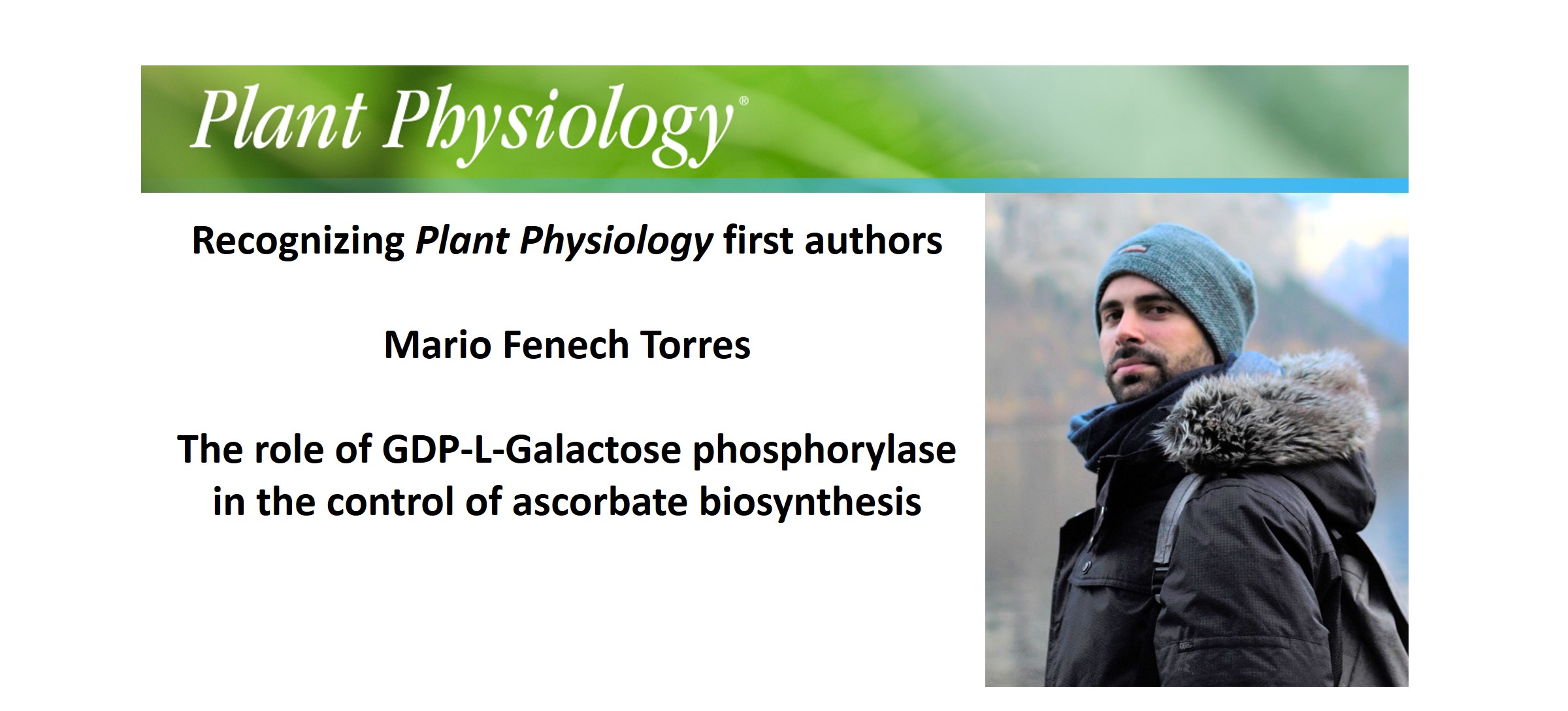Recognizing Plant Physiology authors: Mario Fenech Torres
Mario Fenech Torre, first author of The role of GDP-L-Galactose phosphorylase in the control of ascorbate biosynthesis
Current Position: Postdoctoral researcher in the Plant biotechnology and Biochemistry Lab at the University of Malaga
Education: PhD in Molecular Biology (2020); MSc in Advanced Biotechnology (2015); Environmental Sciences BSc (2014)
Non-scientific Interests: play the guitar, Latin dancing, Crossfit and food
Brief bio: My curiosity for photosynthetic organisms was boosted immediately after the first lecture on algae given by Prof. Maria Altamirano in the first course of my 5-years university degree. This interest would only increase after I entered the department of ecology as an intern student at the end of the second course, when I had my first affair with science, mud and seaweeds. I was astonished by how the molecular rearrangements that algae undergo when exposed to air during low tides determine to perish or to thrive. Therefore, at the end of my degree I swung from the macroscale of environment events to a molecular-based perspective of live and molecular adaptation to environmental cues, the leitmotiv that would drive my PhD.
L-Ascorbic acid, a.k.a. vitamin C, is the most abundant water-soluble antioxidant and it is a major scavenger of reactive oxygen species, which emerge as a consequence of aerobic metabolism in a number of processes, many of which are affected by environmental conditions (like photosynthesis). Thus, a deep understanding on how ascorbate was biosynthesized and how it could be increased became the main interest of my PhD. From a biological point of view, ascorbate is essential to cope with abiotic stresses such as high irradiance or salinity, and, from a biotechnological perspective, ascorbate has a plethora of roles and benefits over plants and humans health. Under the supervision of Prof. Miguel A. Botella and the collaboration of Prof. Nicholas Smirnoff, in this work we studied how the enzymes that biosynthesize ascorbate in Arabidopsis thaliana are organized in space within the cell and how increasing the concentration of each of these enzymes affected to ascorbate concentration. We found that GDP-L-galactose phosphorylase (GGP), the bottleneck of the pathway, controls the ascorbate pool because its protein concentration is significantly lower than the rest of enzymes. Therefore, its overexpression results in a 3-fold increase of ascorbate whereas none of the other enzymes overexpression resulted in an increase of ascorbate concentration. Finally, a metabolic control analysis using the known kinetic properties of the enzymes provides the rationale behind the strength of GGP control over the flux of the pathway.




